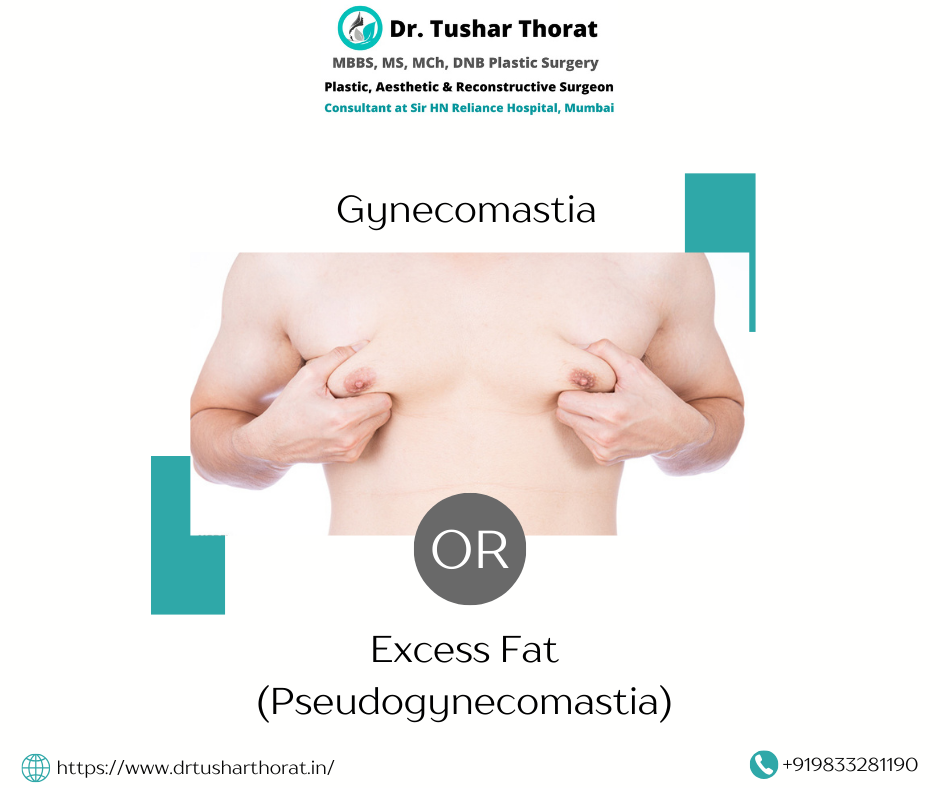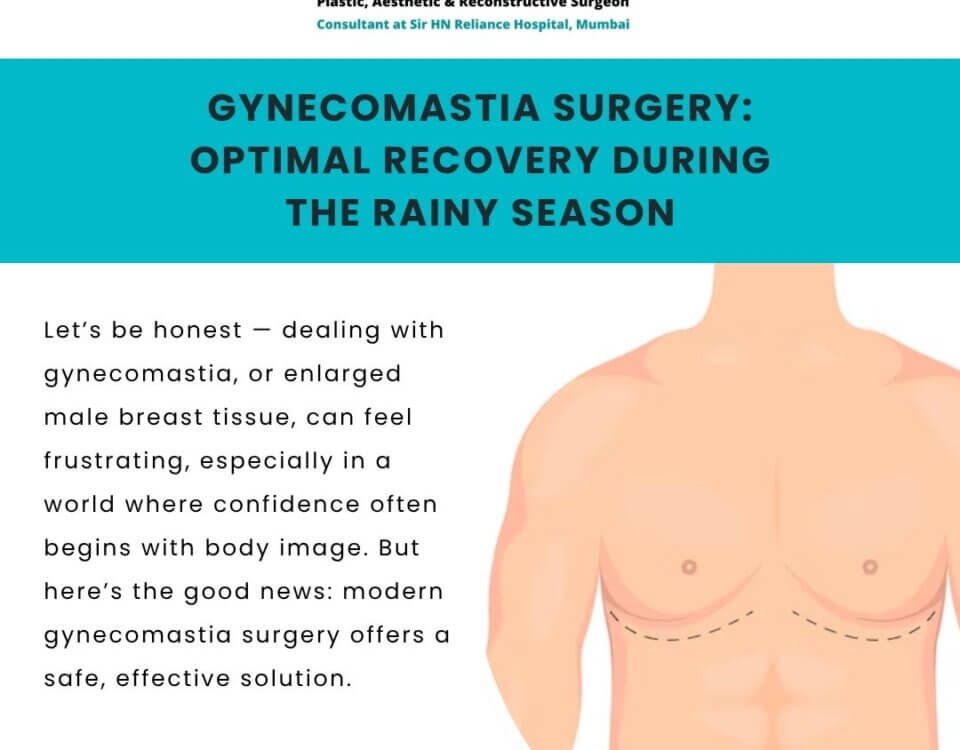Dr. Tushar Thorat, Plastic and Reconstructive Surgeon, Mumbai
Understanding Gynecomastia vs. Excess Fat (Pseudogynecomastia)
One of the most common concerns men face is distinguishing between gynecomastia and excess chest fat (also known as pseudogynecomastia). Both conditions result in an enlarged male chest, but their causes and treatments differ significantly.

What Is Gynecomastia?
Gynecomastia is the enlargement of male breast tissue due to hormonal imbalances, particularly an increase in estrogen or a decrease in testosterone. It can affect one or both breasts and often presents as:
- Firm, rubbery glandular tissue directly under the nipple
- Tenderness or sensitivity in the chest area
- Symmetrical swelling around the nipple area
What Is Pseudogynecomastia?
Pseudogynecomastia, on the other hand, is simply excess fat accumulation in the chest, typically caused by:
- Weight gain or obesity
- Lack of physical activity
- Poor dietary habits
- Genetics
This condition doesn’t involve glandular tissue growth, just fat deposits, and it’s usually soft and non-tender.
How to Tell the Difference: Key Signs to Look For
Here’s a quick way to differentiate between gynecomastia and excess fat:
| Characteristic | Gynecomastia | Excess Fat (Pseudogynecomastia) |
|---|---|---|
| Tissue Type | Firm, glandular | Soft, fatty |
| Pain or Tenderness | Often present | Rare |
| Symmetry | Usually symmetrical | Can be uneven |
| Sensitivity | Nipple and breast sensitivity | No sensitivity |
| Underlying Cause | Hormonal imbalance | Weight gain |
When to See a Doctor
If you notice tenderness, swelling, or pain, or if the enlargement seems unusual, it’s best to consult a specialist. Dr. Tushar Thorat specializes in evaluating and treating gynecomastia with safe and effective surgical techniques.
Treatment Options for Gynecomastia
-
Medical Evaluation and Diagnosis
- Physical examination
- Medical history review
- Blood tests to check hormone levels
- Ultrasound or mammogram to assess tissue
-
Non-Surgical Treatments (for mild cases or hormonal imbalance)
- Hormone therapy to balance estrogen and testosterone levels
- Lifestyle changes: diet and exercise to reduce fat
-
Surgical Treatments
- Liposuction: Removes excess fatty tissue
- Glandular Excision: Removes dense glandular tissue
- Combination Approach: For both fat and gland removal
- Recovery Time: Typically 1-2 weeks of downtime with full results in a few months
Why Choose Dr. Tushar Thorat for Gynecomastia Surgery?
- Experienced Plastic Surgeon: Skilled in advanced techniques
- Personalized Approach: Customized treatment plans
- Minimally Invasive Techniques: Faster recovery and minimal scarring
- Patient-Centered Care: Clear guidance throughout your journey
Final Thoughts
If you’re struggling with enlarged male breasts, it’s essential to determine whether it’s gynecomastia or excess fat. Dr. Tushar Thorat can help you make an informed decision and guide you toward the most suitable treatment option. Book an appointment now!





